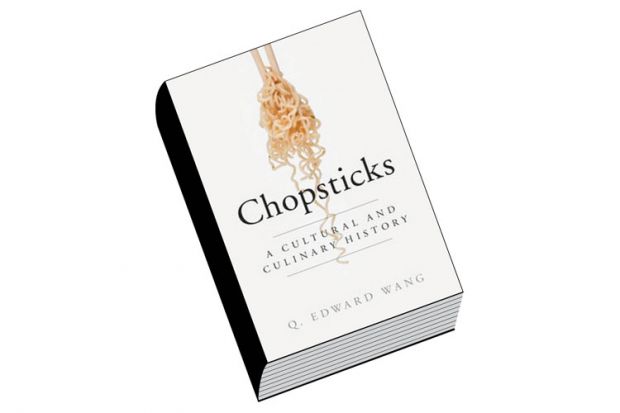I used chopsticks, clumsily, during family outings in New York in the late 1930s, more skilfully and daily in Taiwan from 1958 to 1961, and in China from 1972 on and off to 1991. Typical eaters use cutlery in the West, one hand only in parts of South and Southeast Asia, and chopsticks and spoons in China, Vietnam, Japan and Korea. Like many hundreds of millions of East Asians, I never considered how chopsticks came about.
I wouldn’t say that Edward Wang, a historian at Rowan University in New Jersey and at Peking University, wears his prodigious knowledge of these little eating devices lightly, and if he mentions something once he often repeats it. Nevertheless, he has plenty to offer that this magazine’s readers may think about next time they “have a Chinese”.
Chopsticks have been discovered in tombs more than 3,000 years old, but so were spoons and knives and forks. They didn’t become the main Chinese eating tool until the 12th or 13th centuries, although spoons continue to be used. Chopsticks are made of bamboo, wood, steel, silver, gold and jade, and it is not easy, as Wang shows, to explain how they have been used in different cultures and times. In China, chopsticks are communal eating instruments, with everyone digging their pair into the central dishes. They are also useful if food is very hot. But in Japan, where much food is cold, each diner has their own food and would never touch the food of others. Koreans use chopsticks and spoons together.
More than 2,000 years ago, Wang writes, the Chinese got up off the floor for mealtimes and began using chairs and tables. Chopsticks got longer to reach that central dish. The Japanese, however, stayed on the floor and their chopsticks remain shorter as they eat their individual helpings.
As food changed, chopsticks became more useful than spoons for picking up noodles and lumpy rice. Wang notes that while wielding their chopsticks, many eaters lift their bowls and bend their heads to get near their food. Perhaps fastidiously, he ignores that at home and in ordinary restaurants, eaters tend to use their chopsticks to shovel their food straight into their mouths, especially as they reach the bottom of the bowl (I certainly do).
Quite apart from eating, chopsticks have had many meanings, which are brought to life in this book’s helpful illustrations. Tang and Song poets saw them as instruments of devotion, of togetherness or, if laid down, of parting. Identical pairs are often given at engagement parties and weddings in China. In Japan, one of their meanings is “bridge”, to either love or death.
But big changes have happened in their usage. Westernising East Asians show that they are moving with the times by their increasing use of knives and forks, thereby reuniting themselves with the implements of the Shang Dynasty of 1500BC. Fear of transmitted disease makes many eaters wary of sticking their chopsticks into a common bowl, and the widespread adoption of bamboo and wooden single-use only chopsticks is threatening the planet’s forests.
In this impressively comprehensive book, the author recounts how, when he was still a little fellow, his mother instructed him in minute detail on how to use chopsticks. Years later, travelling through East Asia, he observed that everyone else used them exactly the same way.
Jonathan Mirsky was formerly associate professor of Chinese, history and comparative literature at Dartmouth College in the US, and former Far East editor of The Times.
Chopsticks: A Cultural and Culinary History
By Q. Edward Wang
Cambridge University Press, 210pp, £19.99
ISBN 9781107023963 and 9781316190715
Published 28 May 2015
Register to continue
Why register?
- Registration is free and only takes a moment
- Once registered, you can read 3 articles a month
- Sign up for our newsletter
Subscribe
Or subscribe for unlimited access to:
- Unlimited access to news, views, insights & reviews
- Digital editions
- Digital access to THE’s university and college rankings analysis
Already registered or a current subscriber?
